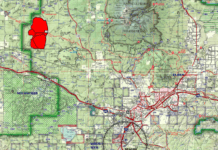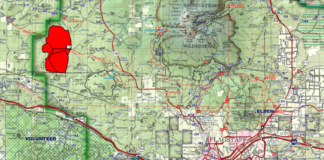For an outdoorsman like myself, there is so much to love about the red rocks surrounding Sedona.
Like many people, I moved here specifically because of all the red sandstone spires that litter the area like great geological monoliths from a time long ago.
Twenty years prior to moving to Sedona, I saw a photograph in a magazine, taken from Airport Mesa, of the range of rocks that runs from Lizard Head to Coffee Pot with the quaint little neighborhoods of West Sedona in the foreground. The magazine article talked about the “artistic” and “spiritual” aspects of the Sedona community, and although at that time I wouldn’t have used either of those words to describe myself, I still found myself dreaming of living and working in a community like that.
My dream came true in 2011 when I moved here without ever having visited before, and found something I didn’t expect to find — a trail system unlike anything I’d ever seen before.
I’ve noted in this column that I grew up in Colorado, and I got my “hiking jones” at a young age, so I’ve been on a lot of trails in my lifetime. But I’ve never before seen a trail system as accessible as the one here in the red rocks surrounding Sedona.
If you live in the city of Sedona, you really don’t have to drive anywhere to get on a trail, because there are access points to the trail system everywhere. And the interconnectedness of the trail system means that, once you are on the trail, you can hike virtually anywhere in the region. In short, the U.S. Forest Service has done a wonderful job of planning this trail system.
Yes, I am aware that many, if not most of the trails were originally user-created or “social” trails, but much work was done by the Forest Service before it could adopt those trails — including reroutes, rock armoring and fixing drainages.
In my time here, I’ve heard a lot of talk from the Forest Service about sustainability which, in addition to the above procedures, also means having the man [and woman] power to maintain the trails in a usable state.
The problem in the Red Rock Ranger District is that the number of people using the trails has increased dramatically in recent years, while the funding to maintain those same trails has decreased.
So with well over half a million trail users creating damage each year and only a handful of people repairing that damage, the prospects for long-term sustainability are in jeopardy. So something’s got to give.
The solution, however, is not too difficult to grasp — and it’s right here in front of our faces.
I recently interviewed new Red Rock District Ranger Nicole Branton, who told me that it is widely known within the Forest Service that this district has the highest number of volunteer hours of any district in the nation. Having met many of those volunteers, I have no trouble believing that.
Volunteer groups like the Friends of the Forest, Verde Valley Cyclists Coalition and the Sedona Westerners, not to mention many other groups, do a wonderful job of helping maintain the trails.
Volunteer opportunities abound in the red rocks, and even if you’re not a member of one of the above groups, you still may join with the Forest Service’s Adopt-a-Trail program.
Sadly, my own time in the Sedona red rocks is coming to an end this week. I’m moving back to Colorado to be closer to family and to find some new trail adventures.
But I will always remember my time on the red rock trails fondly. And I leave here knowing that, because of the efforts and passion of Forest Service employees and local volunteers, the red rocks will remain accessible to people just like me, chasing a dream, for years to come.
For the full story, please see the Friday, Dec. 27, issue of the Sedona Red Rock News.


















